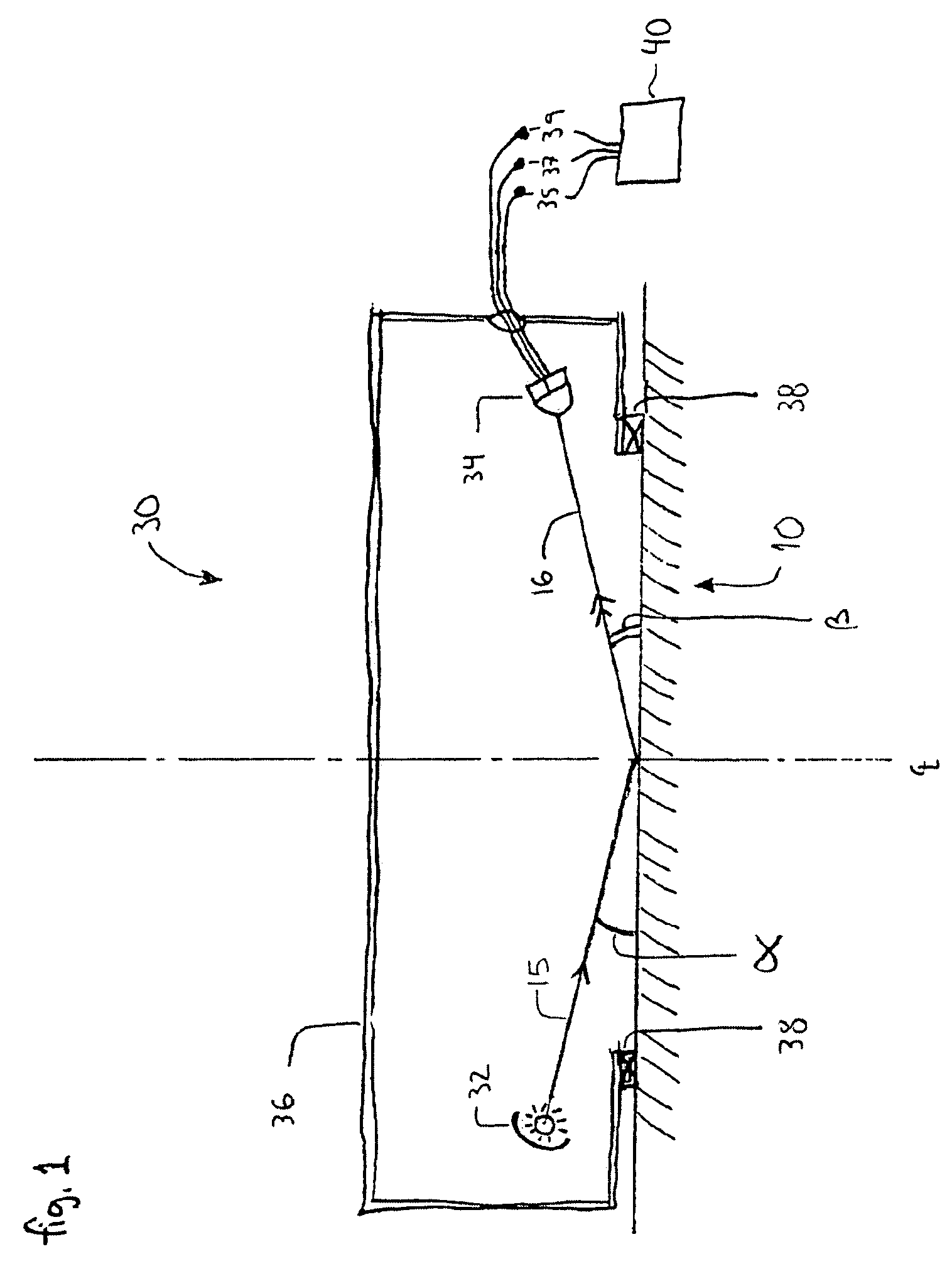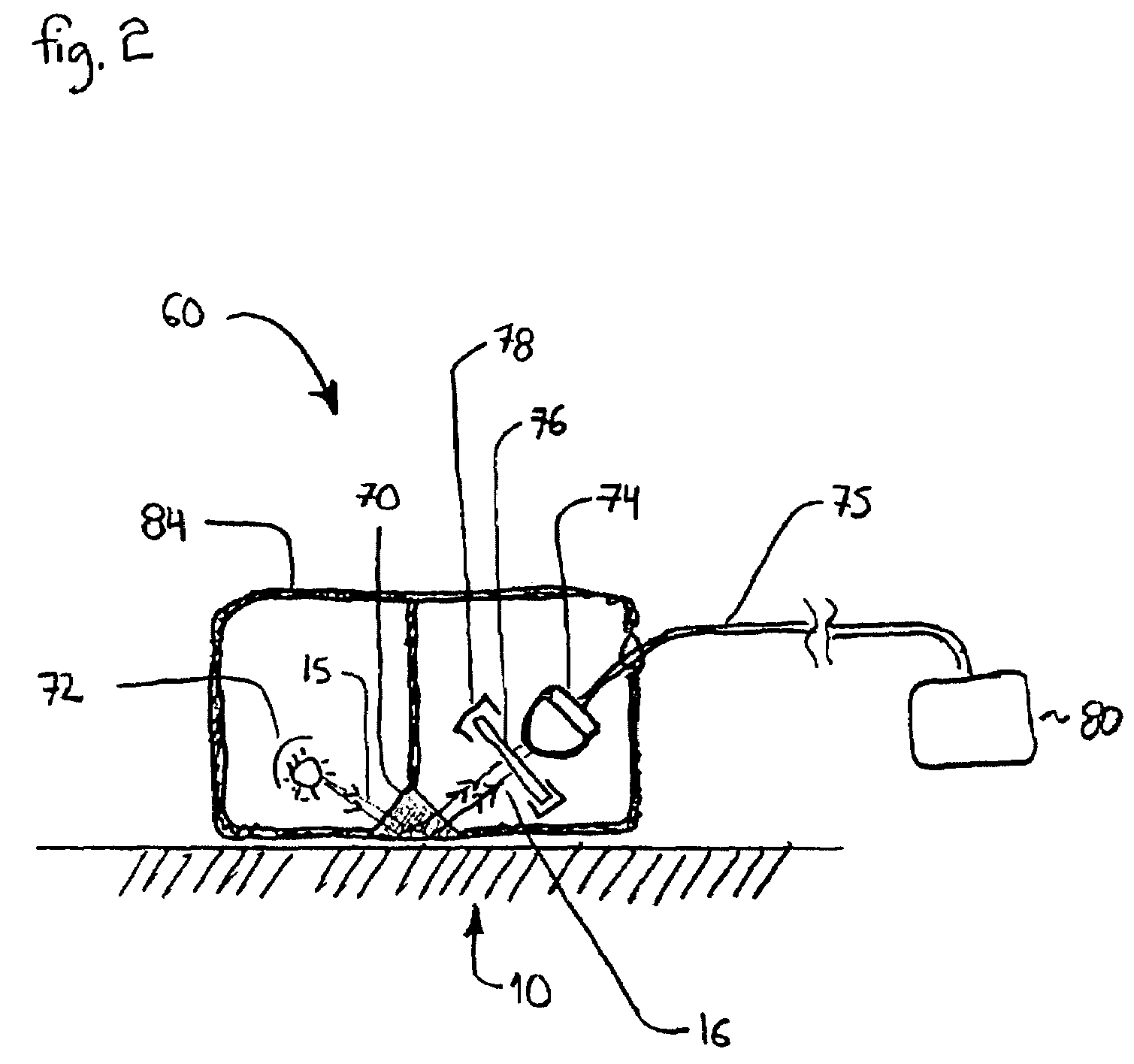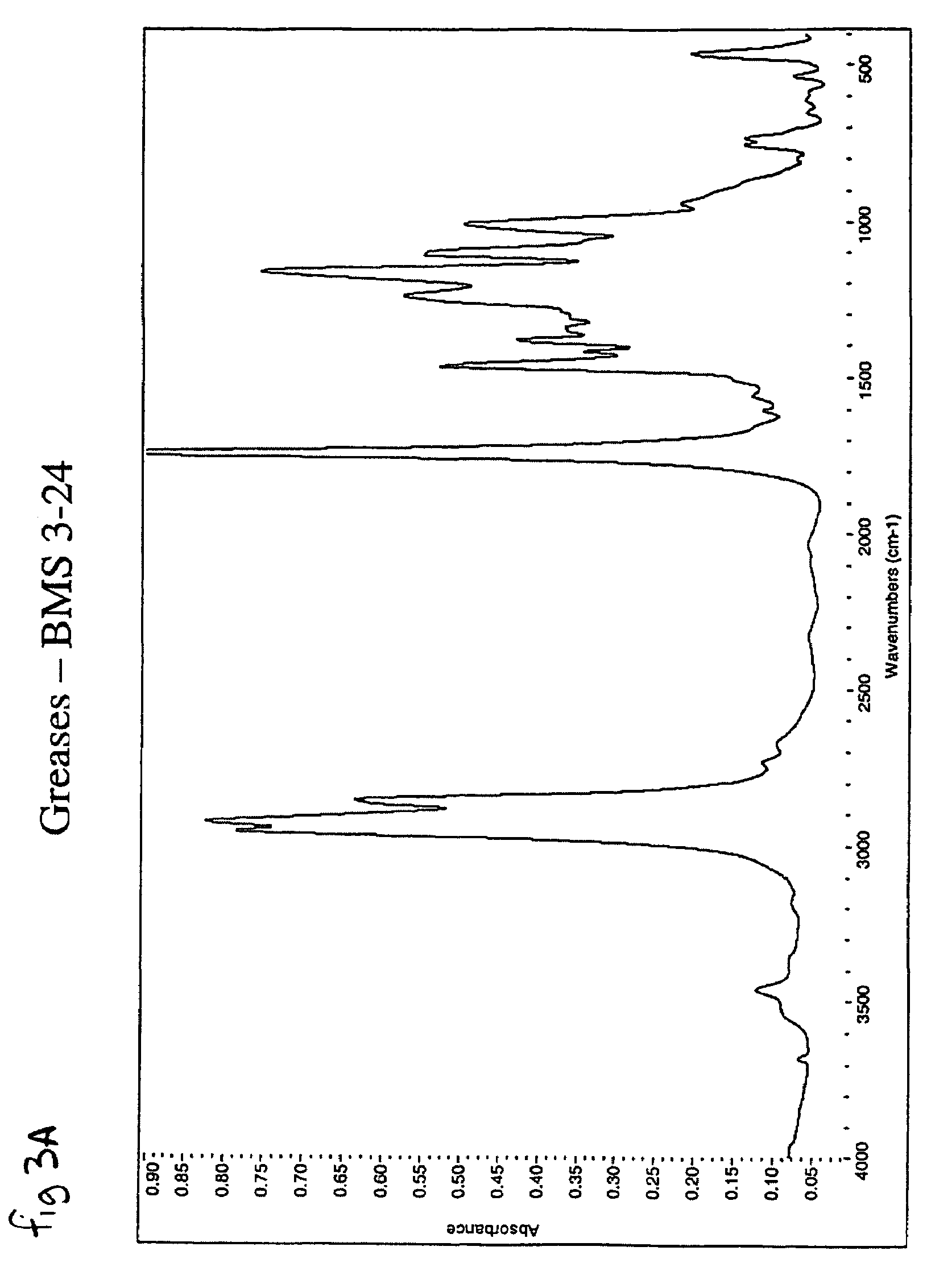Method for identifying contaminants
a technology for contaminants and detection methods, applied in the measurement of optical radiation, x/gamma/cosmic radiation, instruments, etc., can solve the problems of methods that use heavy and bulky equipment, and achieve the effect of efficient and objective determination
- Summary
- Abstract
- Description
- Claims
- Application Information
AI Technical Summary
Benefits of technology
Problems solved by technology
Method used
Image
Examples
Embodiment Construction
[0049]By way of overview, a non-destructive method is provided for determining presence of or identifying a contaminant on a substrate. According to an aspect of the invention, an infrared beam is transmitted onto a sample. A first infrared absorbance of the sample is determined at a first wave number. A second infrared absorbance of the sample is determined at a second wave number. The first absorbance is correlated to a first absorbance peak of a contaminant. The presence of a predetermined level of the contaminant is confirmed by correlating the second infrared absorbance to a second absorbance peak of the contaminant.
[0050]Referring to FIG. 1, in one embodiment of the present invention, an exemplary testing device 30 is used to determine the presence of a predetermined level of a contaminant on a substrate or to identify a contaminant on the substrate. An infrared transmission beam 15 is transmitted by an infrared source 32. The beam 15 is reflected off the surface 10 and the re...
PUM
| Property | Measurement | Unit |
|---|---|---|
| wavenumbers | aaaaa | aaaaa |
| wavenumbers | aaaaa | aaaaa |
| wavenumbers | aaaaa | aaaaa |
Abstract
Description
Claims
Application Information
 Login to View More
Login to View More - R&D
- Intellectual Property
- Life Sciences
- Materials
- Tech Scout
- Unparalleled Data Quality
- Higher Quality Content
- 60% Fewer Hallucinations
Browse by: Latest US Patents, China's latest patents, Technical Efficacy Thesaurus, Application Domain, Technology Topic, Popular Technical Reports.
© 2025 PatSnap. All rights reserved.Legal|Privacy policy|Modern Slavery Act Transparency Statement|Sitemap|About US| Contact US: help@patsnap.com



